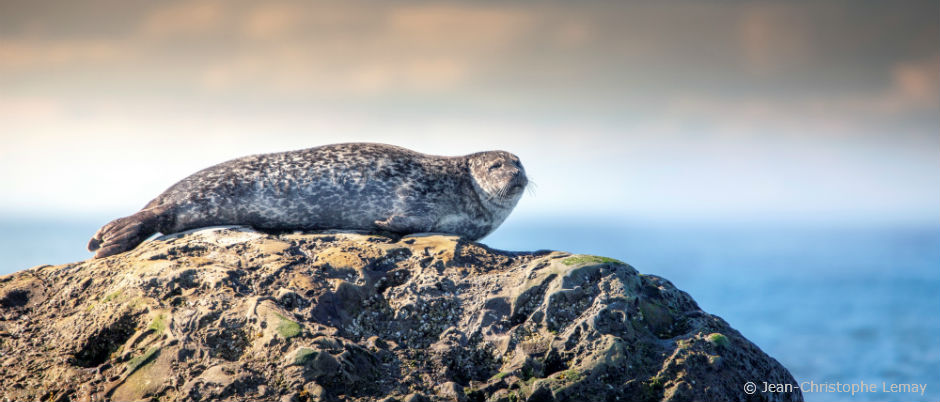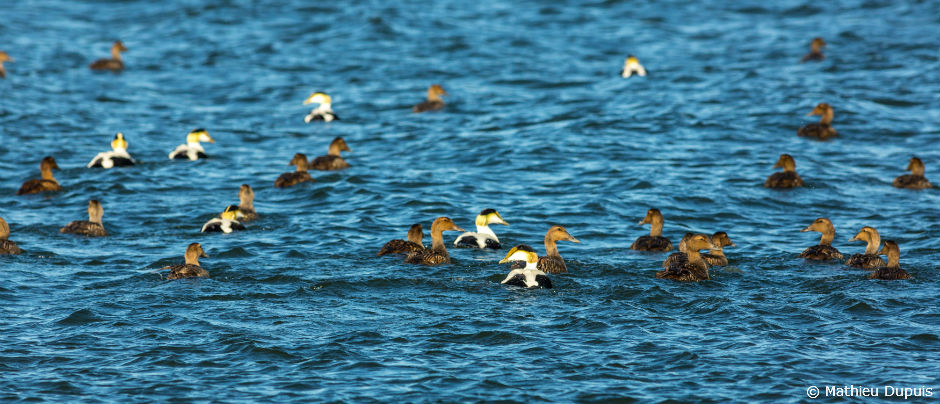The Québec maritime Blog

-
Kamouraska
Mathieu Dupuis
Ideas for Your Vacation in Bas-Saint-Laurent
In Bas-Saint-Laurent, breathing in the salty sea air produces a sense of well-being… To the west, the capes of Charlevoix rise up on the other side of the St. Lawrence, providing a spectacular setting for sunsets. On this side of the estuary, multicoloured fields extend in a checkered pattern all the way to the Notre-Dame Mountains. This beautiful agricultural landscape was first created by the early settlers, who cleared and cultivated the rich alluvial soil along the St. Lawrence. At the edges of their fields, they fished for eel and sturgeon along the foreshore. Still today, you can see fishing nets stretched out to sea in this region.
Whether you access Bas-Saint-Laurent by road from Québec City or by ferry from the north shore, sooner or later you’ll spot whales feeding in the St. Lawrence. You can also drive to this region via neighbouring Gaspésie or from New Brunswick via the Trans-Canada Highway, which follows the Madawaska River.
Wildlife

Many harbour and grey seals can be spotted near the coast, especially around the islands in Parc national du Bic. They’re attracted to the colourful hulls of kayaks, so they’re likely to pop their heads out of the water to check you out if you go sea kayaking in the park. The luckiest paddlers and hikers will spot whales, which sometimes follow schools of fish near the coast. However, because of the shoals along the south shore, these impressive marine mammals are more likely to be found closer to the north shore of the St. Lawrence. You can go out to see them on a whale-watching excursion with Croisières AML departing from the Rivière-du-Loup wharf (available again in 2024).
Home to aquatic, marshy, agricultural and forest environments, Bas-Saint-Laurent is a prime bird-watching destination. The region’s islands and bays provide shelter to many species of ducks, including common eiders. Off Rivière-du-Loup, tranquil Île aux Lièvres (Hare Island)—a nesting site for eiders, guillemots, razorbills and murres—is a paradise for both experienced and budding birders.
Many birds of prey can be spotted gliding above the fields and monadnocks (rocky outcrops) so characteristic of Bas-Saint-Laurent, including hawks, kestrels, falcons, harriers, goshawks and vultures. A concentration of bald eagles nests at the confluence of the Touladi River and Lake Témiscouata. If you stay in Parc national du Lac-Témiscouata, you’re very likely to spot these majestic birds of prey along with white-tailed deer, which abound in the forests in this area. Deer can also be observed in Parc national du Bic.
National parks and natural sites
In addition to the Saguenay–St. Lawrence Marine Park, which protects a segment of the St. Lawrence that is recognized as one of the best whale-watching areas in the world, Bas-Saint-Laurent is home to two other equally exceptional national parks.

Parc national du Bic offers visitors an opportunity to immerse themselves in a maritime environment along the shores of the upper estuary. Beautiful hiking trails lead from beach to beach to a shale point that has been battered by the tides. This spit of land in the shape of waves facing the sea is unique. In addition, the bays in the park are the setting for a multitude of stories about smugglers from the Prohibition era. Enjoy a memorable stay in this park that offers camping, glamping, sea kayaking excursions and various interpretive activities.

Parc national du Lac-Témiscouata, the latest addition to Eastern Québec’s national parks, will give you the opportunity to follow in the footsteps of the Wolastoqiyik people, who travelled between the Bay of Fundy and the St. Lawrence for thousands of years. Among other things, they came to this area for quartzite, which they used to make arrowheads. In the early 20th century, Grey Owl (Archibald Belaney), a conservationist and controversial figure, lived in this area and worked to regenerate the beaver population, which had been decimated by the fur trade. If you stay in the forest in this park, you can enjoy hikes along Lake Témiscouata, a loop bike ride, canoeing or kayaking excursions on the lake and even a canoe-camping trip on several lakes in the park and the Touladi River.
Bas-Saint-Laurent is also full of natural sites for you to explore. Fall under the spell of the bucolic landscapes found in the SEBKA riverside park. To fully immerse yourself in this environment, enjoy one of the many activities on offer, including rock climbing, hiking and sea kayaking.

A pause in Rivière-du-Loup is an opportunity to visit Parc de la Pointe, a beautiful waterfront area to explore on foot or by bike, as well as Parc des Chutes, where the river for which the city was named flows down a rocky cliff right in the centre of town. This is also the starting point of the Petit Témis Interprovincial Linear Park, a 134-km (83-mi.) trail for cyclists and hikers built along an old railway bed that leads to Dégelis. Want to head out to sea? From the Rivière-du-Loup wharf, Société Duvetnor will take you by boat to Île du Pot à l’Eau-de-Vie (Brandy Pot Island) and Île aux Lièvres (Hare Island), where you can camp, stay in a cottage or even overnight in a lighthouse that’s been converted into an inn.
From Rimouski, you can go on an excursion to Saint-Barnabé Island, where you can hike and camp, or head inland to discover the Canyon des Portes de l’Enfer (Hell’s Gate Canyon). In addition to offering hiking and lodging (in a campground, glamping units or cottages), the site pays tribute to the log drivers who once worked in this area. Families will also enjoy a visit to Domaine Valga, home to an adventure park called “La Forêt de Maître Corbeau,” which offers aerial games in an old-growth forest that’s the only one of its kind in the region.
Culture and discoveries

Navigating the St. Lawrence has never been an easy task. The lighthouses that dot the coast are important to navigators to this day. Québec’s first lighthouse was built on Île Verte (Green Island). The charming little island is worth a visit; the lighthouse, which is still in operation, is open to the public. The Pointe-au-Père Lighthouse, which features an imposing concrete structure, is a landmark in the St. Lawrence Estuary. After climbing the tower’s 128 steps to admire the view, you can continue your visit of this maritime historic site by discovering the Onondaga submarine and the museum, which presents an exhibition on the history and tragic sinking of the Empress of Ireland ocean liner.
Many other museums and interpretation centres recount the region’s history, with a focus on rural life, agricultural development, the region as a railway hub, traditional crafts and methods, contemporary artistic life, nature and the environment, etc. Fort Ingall, for example, offers a variety of exhibitions and activities that allow visitors to relive a border conflict between the United States and Canada in the early 19th century, in a reconstruction of a British campaign fortress built in Témiscouata in 1839.
Bas-Saint-Laurent also hosts several music festivals you won’t want to miss. In early August, Les Grandes Fêtes TELUS presents a lively program featuring a variety of Québec and international artists, mostly bands and solo musicians but also stand-up comedians. Come to Beauséjour Park in Rimouski to discover them in an electrifying atmosphere! A little later in the month, the “Concerts aux Îles du Bic” Chamber Music Festival features a series of concerts in various original venues: Parc national du Bic, the church and an octagonal barn in Saint-Fabien, the Rimouski wharf, etc. The quality of the programming and performances makes this a first-rate festival. In late August or early September, while the weather is still warm, the Rimouski Festi Jazz International takes over downtown Rimouski. This event includes both indoor and outdoor shows featuring local, national and international ensembles and will delight musicians and jazz lovers alike.

The beauty of Bas-Saint-Laurent and the region’s farming and fishing traditions are reflected in local flavours. Incredible taste adventurers have crafted wines and liqueurs made with maple sap at Domaine Vallier Robert in Auclair, in the Témiscouata area. You can tour the facilities and taste their premium products at any time of the year. Are you more of a hops fan? Then you’ll want to visit the Tête d’Allumette microbrewery in Saint-André-de-Kamouraska to sample their wide variety of beers brewed over a wood fire as you soak up the incredible view from their patio.
If you have a sweet tooth, you won’t want to miss Pâtisseries et Gourmandises d’Olivier in Rimouski, which also offers French breads and pastries made with pure butter, as well as La Fée Gourmande in Kamouraska, which offers chocolates made with pure cocoa butter. Frequent stops and detours in the villages of Bas-Saint-Laurent will also give you the opportunity to discover many other delicious local products: smoked eel, fresh sturgeon, snow crab, lamb, organic produce, wild mushrooms, cheeses, maple products and more. All of these provide inspiration to several noteworthy restaurants in the region, including Côté Est (Kamouraska) as well as the dining rooms in Auberge du Portage (Notre-Dame-du-Portage), Auberge de l’Anse (Rivière-du-Loup), Auberge du Chemin Faisant (Témiscouata-sur-le-Lac) and Auberge du Mange Grenouille (Le Bic).
Natural beauty, rich farmland and picturesque towns with unique architectural heritage make Bas-Saint-Laurent a popular destination. Stay in this region for authentic experiences and to fill up on good times!
Enjoy your vacation in Bas-Saint-Laurent!

(0) comment